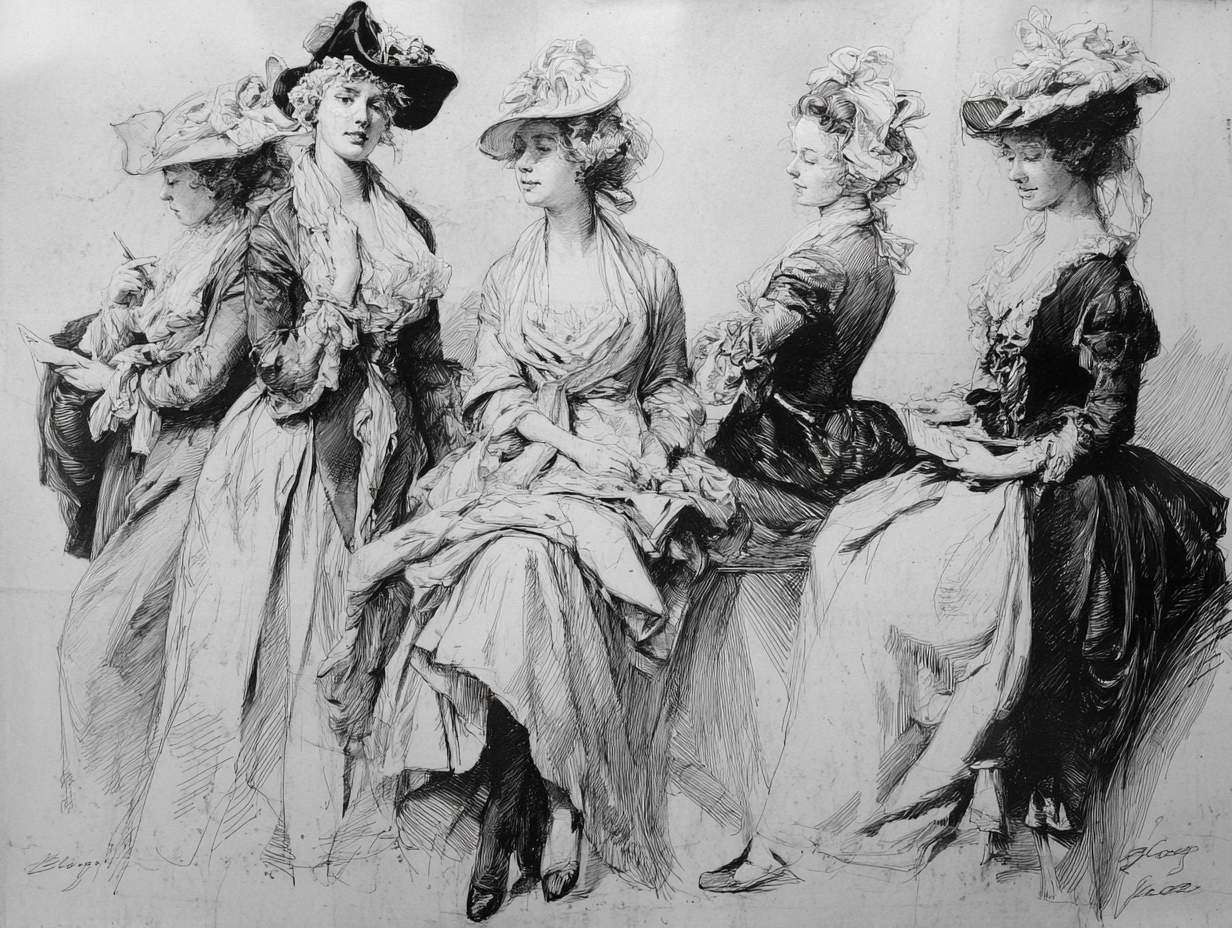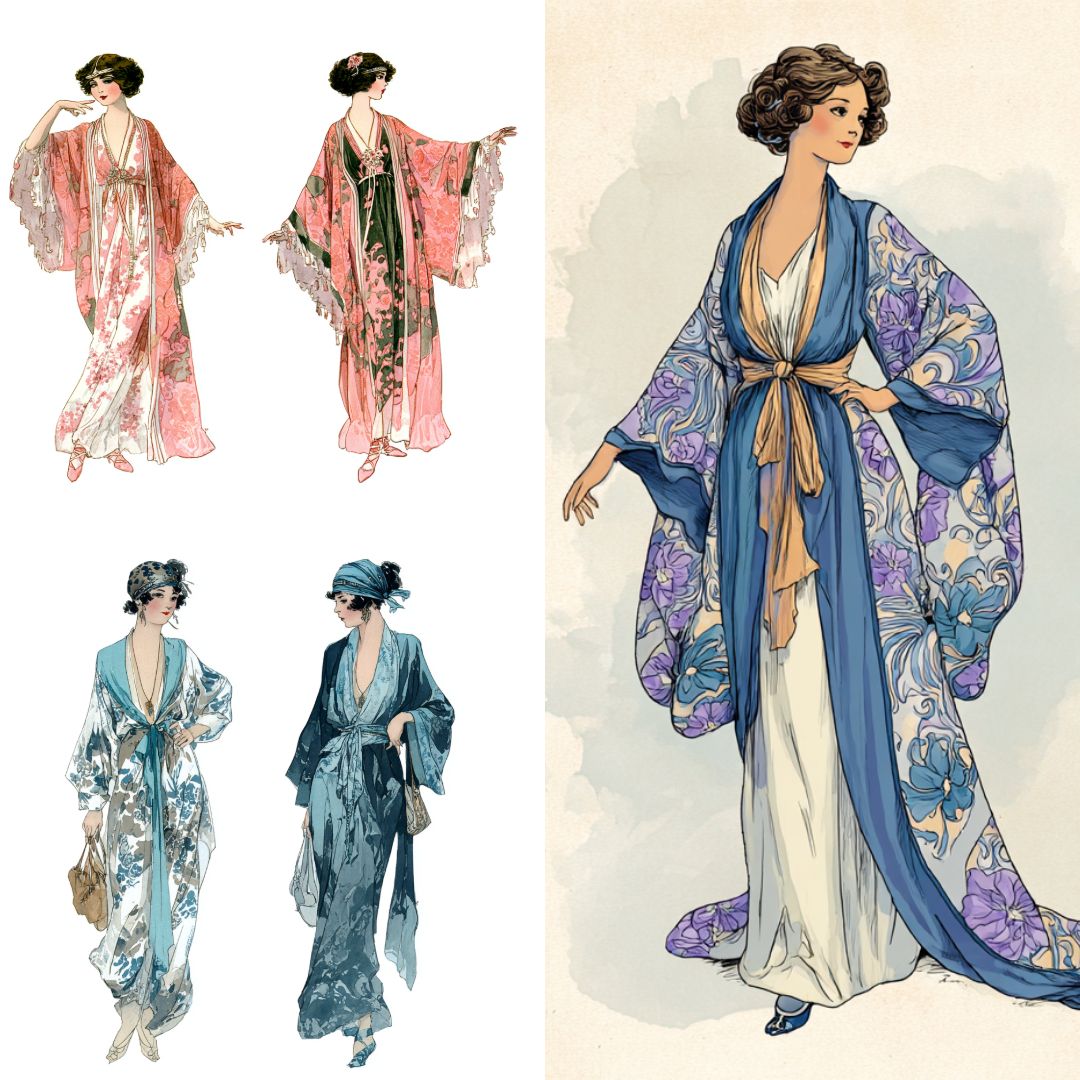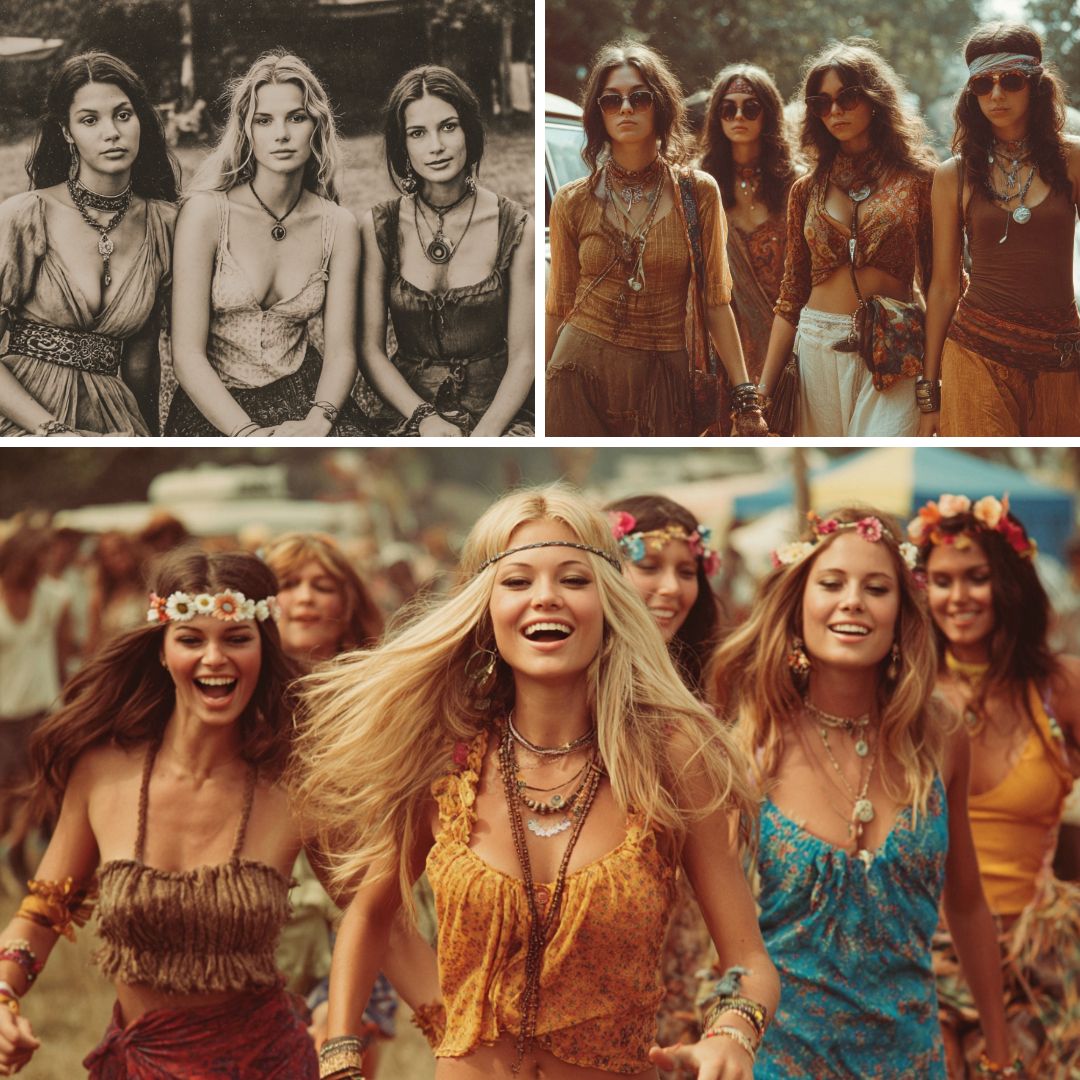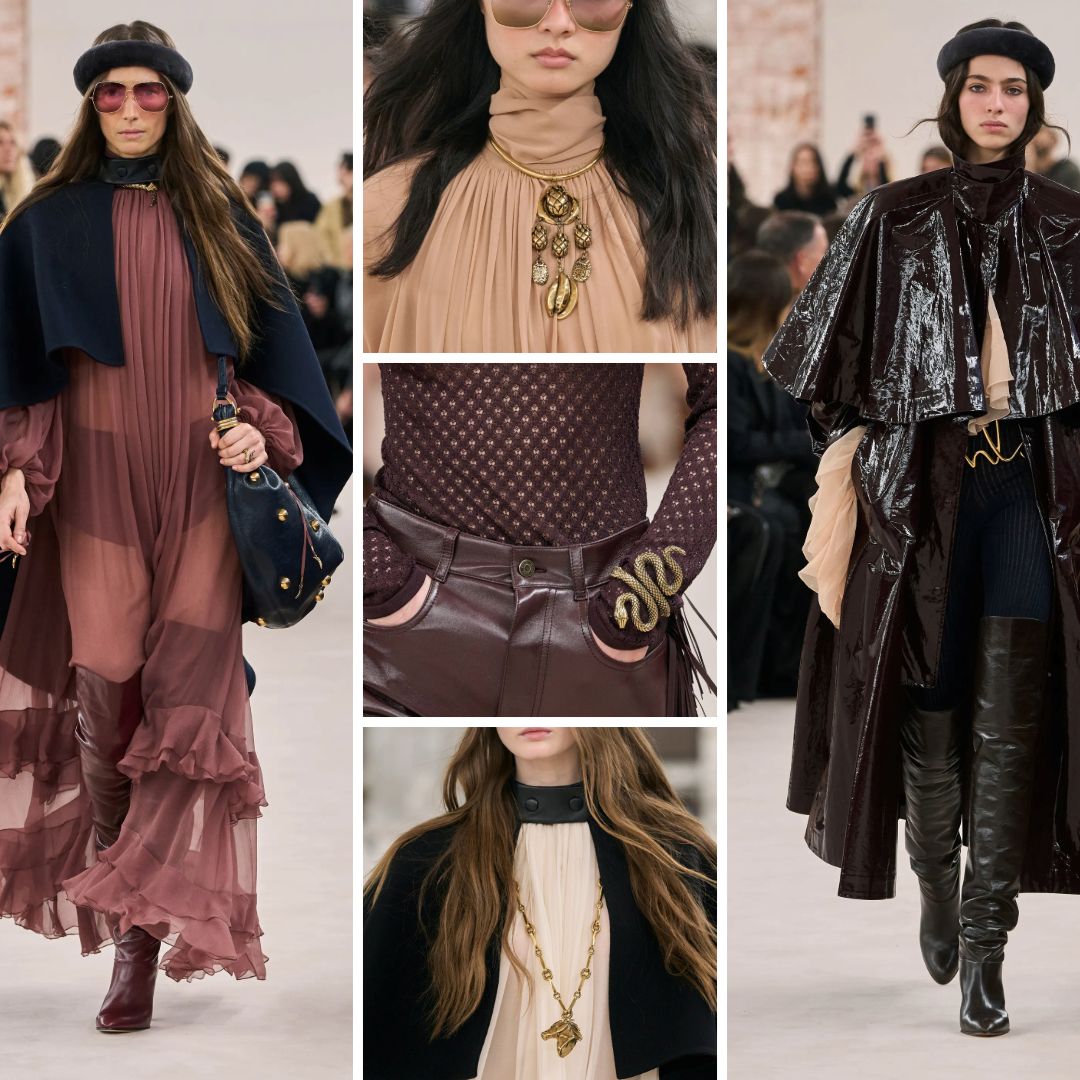Boho Style: Origins, Evolution, and What It Really Means
New to Luneville embroidery?
Start with the chain stitch—my free visual guide shows you exactly how
Boho style — short for bohemian — is often reduced to flowing dresses and festival outfits. But behind the fringe and florals lies a deeper story shaped by history, resistance, and a long-standing connection to craft and personal expression.
A Misunderstood Beginning
Although the word “bohemian” dates back to the Enlightenment era, the fashion style did not originate during that time. The term emerged in 19th-century France, where artists and writers who lived outside of conventional society were described as bohèmes. This label was partly based on a misconception: many associated the Romani people with the Bohemia region of Central Europe, and the word “bohemian” soon became shorthand for an unconventional, often nomadic lifestyle.
Post-Revolution Shift

After the French Revolution, much of the aristocracy’s wealth and cultural patronage disappeared. Some members of the creative class, no longer supported by royal commissions, adopted a more modest and expressive form of dress. This included repurposed garments, draped silhouettes, and layered fabrics. While this wasn’t yet a fashion movement, it laid a foundation for alternative dress codes that rejected rigid social norms.
Romani Influence
Romani dress — characterised by layered skirts, bold colours, and mixed textures — influenced the visual imagination of 19th-century French artists. The association between the Romani and creative rebellion helped shape the identity of the bohemian, not just as a social figure but as a visual type. This influence still resonates today in the layered, eclectic combinations seen in modern boho fashion.
The Couture Connection

In the early 20th century, designer Paul Poiret helped change the silhouette of women’s clothing by eliminating corsetry and introducing flowing tunics, kimono sleeves, and Eastern-inspired garments. While Poiret wasn’t associated with bohemianism, his designs influenced later interpretations of the style, especially as fashion became more global and fluid.
The 1960s and 1970s: A Defining Era
The modern version of boho style took shape during the counterculture movements of the 1960s and 70s. Hippies embraced global influences, vintage garments, embroidery, and handmade details as an expression of anti-consumerist values. Fringe, beads, lace, natural fabrics, and folk references became key elements of their look.
Boho style in this period wasn’t just aesthetic — it was political. Clothing became a statement of identity, freedom, and resistance to mass production.
From Subculture to Runway

Large-scale music festivals like Woodstock (1969) helped cement the look in the public eye. Decades later, events like Coachella contributed to the commercial revival of the aesthetic. By the early 2000s, boho-chic emerged as a luxury-coded version of the original look, led by brands like Chloé and worn by public figures like the Olsen twins and Sienna Miller.
Boho in Contemporary Fashion

The return of Chemena Kamali as creative director at Chloé in 2023–2024 marked a new wave of interest in boho silhouettes. Her FW 2024 collection drew on the brand’s early 2000s identity, reviving flowing dresses, wide sleeves, natural tones, and layered fabrics. Other major fashion houses followed suit: Zimmermann, Ralph Lauren, and Saint Laurent all incorporated elements of boho style in their Spring/Summer 2025 collections.

This renewed focus is not a fleeting theme. Vogue Runway highlighted “the boho breeze” as a defining thread of Resort 2025 collections, noting recurring silhouettes from Chloé and Alexander McQueen. Meanwhile, Harper’s Bazaar and Teen Vogue identified boho skirts, lace layers, and handcrafted elements as key summer trends. Even Vogue Business pointed to a broader return of suede, embroidery, and western-inflected textures — closely aligned with the boho aesthetic.
Key Elements of Contemporary Boho Style
Semi-sheer blouses with ruffles or volume
Statement cuffs and wide sleeves
Maxi dresses and skirts in natural fabrics (cotton, chiffon, silk)
Lace inserts and overlays
Denim and faux fur
Ethnic-inspired jewellery and accessories
Platform shoes or wooden soles
1970s-style aviator sunglasses
A Style That’s Staying
What was once a fringe look has returned to the centre of fashion conversation — not just on runways but across resortwear and street style. According to trend coverage in Vogue, Harper’s Bazaar, and Vogue Business, the 2025–2026 cycle will continue to embrace boho aesthetics — especially where they intersect with craftsmanship, layering, and romantic volume.
This isn’t just nostalgia. It reflects a growing interest in natural materials, personal styling, and historical references. And as fashion continues to seek slower, more tactile modes of expression, boho style remains a key visual language for that shift.
Exploring Boho Fashion in Depth
Boho is set to return in 2026 — but not in the usual commercial way. For designers, stylists, and creatives, it’s a chance to revisit a style that combines freedom, heritage, and craft. That’s why I’m running a series of articles unpacking what boho really means — beyond clichés.
I’m writing from the perspective of a textile artist and embroidery designer, exploring boho not just as a style, but as a design language: full of references, rooted techniques, and evolving visual codes.
Boho Style: A Brief Fashion History
Where the aesthetic comes from — and how it’s been shaped by art, politics, and pop culture.A Vocabulary of Embellishment in Boho Fashion
What details make boho recognisable? From embroidery to fringe, a breakdown of core techniques.Boho Motifs and Their Meanings
Symbols at the heart of boho design — from florals and paisley to birds and celestial imagery.
More coming soon.
Written By
Ksenia Semirova
MA Textiles
An experienced hand embroidery and textile artist based in Hove, UK. Professionally practicing since 2021, mastering various techniques.
Also a fine artist and visual researcher, exhibiting her works across the UK and internationally.
Join my mailing list
Get the latest and greatest updates to your inbox!